Have you ever felt like your pants were dragging down your entire outfit? Here, we’ll discuss why you can’t find pants that suit you and how to find some that do. We’ve outlined seven mistakes that might be the source of your pant problems.
- 1. You’re Focused Only on Size, Not Fit.
- 2. You’re Dressing for the Body You Want.
- While wishful thinking won’t do anything to help us look better, dressing for the realities of our bodies will.
- 3. You’re Following Trends.
- 4. You’re Ignoring Helpful Classic Style Trouser Features.
- 5. You’re Settling for Boring Pants.
- 6. You’re Not Investing in Your Pants.
- 7. You’re Treating Your Trousers As An Afterthought.
- Outfit Rundown
- Frequently Asked Questions
1. You’re Focused Only on Size, Not Fit.
When we say fit, we don’t just mean, “Do these pants fit you?” Fit in that context refers to size. And it’s fairly simple—either the waistband of the trousers comfortably accommodates your waistline, or it doesn’t. But just because something fits in the waist doesn’t mean that it flatters your body when you wear it.
The broader meaning of fit refers to how well a garment accentuates the best points of your physique and corrects or deemphasizes the less good points. For most men, this means a trouser fit that makes your legs look longer, and your waist look trimmer while moving naturally and comfortably with your body—and doing all of this with clean lines and as few wrinkles as possible.
Learn the difference between Cut, Size, & Fit
And, of course, everyone’s body is different, so you should focus on finding a proportional fit that complements your body proportions and harmonizes with the proportions of the rest of your ensemble. Maybe you prefer more plush and drapey attire like Raphael or a slimmer, trimmer look, as Ivan does.
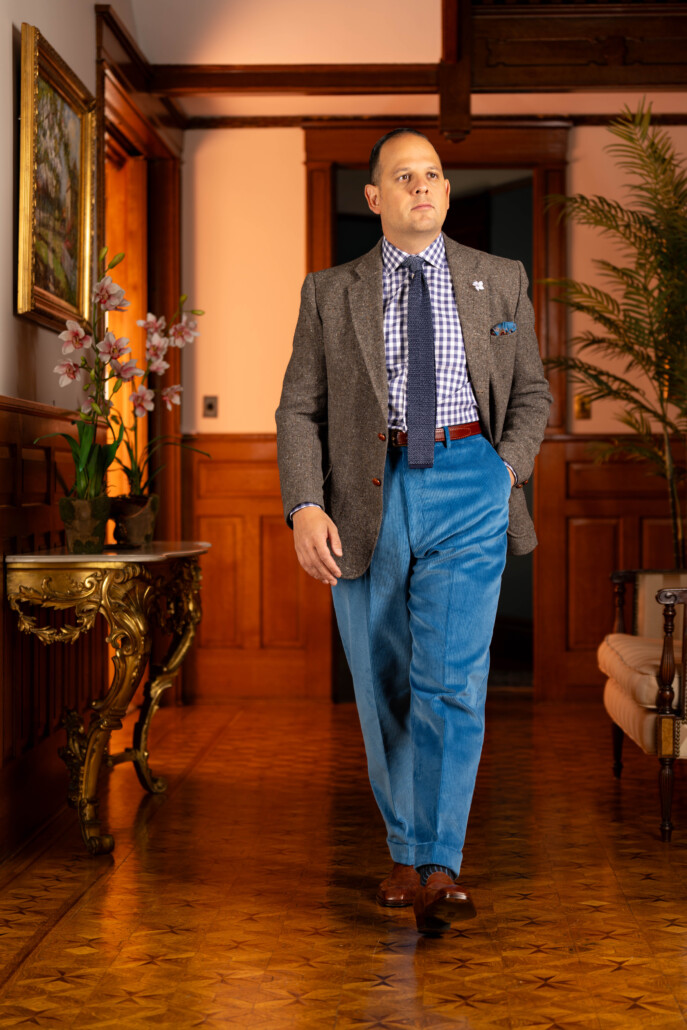

How trousers fit also varies based on the material. A heavyweight wool pair of dress pants will hang very differently on your body than jeans, which is why trying on pants is so key to getting the fit right.
Obviously, we’ve barely just scratched the surface of understanding proper trouser fit. So, to learn more, we encourage you to read our dedicated guide on how pants should fit.
2. You’re Dressing for the Body You Want.
Properly identifying and employing the correct trouser fit really comes down to being honest about what your body really looks like. There are things almost all of us would like to change about our bodies. Eb wishes that he had less fat on his face, Raphael wishes that he had thinner thighs, and being tall isn’t all it’s cracked up to be.
But while wishful thinking won’t do anything to help us look better, dressing for the realities of our bodies will. Pants that are poorly fitted due to a size discrepancy tend to be very obvious, whether as a puddling hemline, exposed ankles, skin-tight fabric, or billowy legs.
Squeezing into a 32-inch waist trouser won’t give you a 32-inch waist any more than cramming size 12 feet into a size 8 shoe will. But fortunately, classic style isn’t one-size-fits-all. One of the many benefits of classic style is that it has helped men shaped like Fred Astaire and men shaped like Sydney Greenstreet look fantastic.
It’s just a question of finding what works best for your body, which you don’t have to do alone because we have numerous guides on how to look your best with the body you have.
We suggest starting with How to Dress for Your Body Type.
3. You’re Following Trends.
One of the main reasons why men are unhappy with their bodies is that they are constantly comparing them to movie stars, celebrities, and models—basically, people whose job it is to look good.
These beautiful people either set trends or are paid to model trends—and that includes fads in men’s pants. For years, super skinny-fit trousers dominated menswear, largely because they accentuated the figures of thin, athletic men. Trendy pants are just one of the many examples of why modern style only works for one body type, while, as previously mentioned, classic style works for every body type.
![Skin Tight Trousers That Looks Too Uncomfortable To See. Skin-tight trousers that look too uncomfortable to see. [Image credit: Kojo Fit]](https://www.gentlemansgazette.com/wp-content/uploads/2023/02/Skin-tight-trousers-that-looks-too-uncomfortable-to-see.-1030x579.jpg)
So, if you’re selecting pants exclusively because they look good on a model on the runway, you might be picking pants that won’t look good on you because they weren’t picked for you. Instead of chasing trends that are, by definition, only going to change constantly, select pants based on the timeless conventions of classic style that have helped countless men look their best throughout the ages.
And sometimes, figuring out mistakes so that you don’t have to is one of the best ways to be helpful, so check out the seven pants mistakes Kyle identifies in this article.
“A life spent making mistakes is not only more honorable, but more useful than a life spent doing nothing.”
George Bernard Shaw
4. You’re Ignoring Helpful Classic Style Trouser Features.
Speaking of classic style conventions, throughout the history of menswear, trousers developed particular features and cuts that were intended to improve the wearing experience and the look of the trousers. Unfortunately, as modern style became increasingly obsessed with the new and the novel, many of these helpful features were dismissed as old-fashioned and uncool.
Even though high-rise trousers kept many men, like Cary Grant and Cab Calloway, looking elegant, they were relegated to becoming nerd pants. Pleats that added mobility and visual interest were dismissed as features for grandpa’s pants.

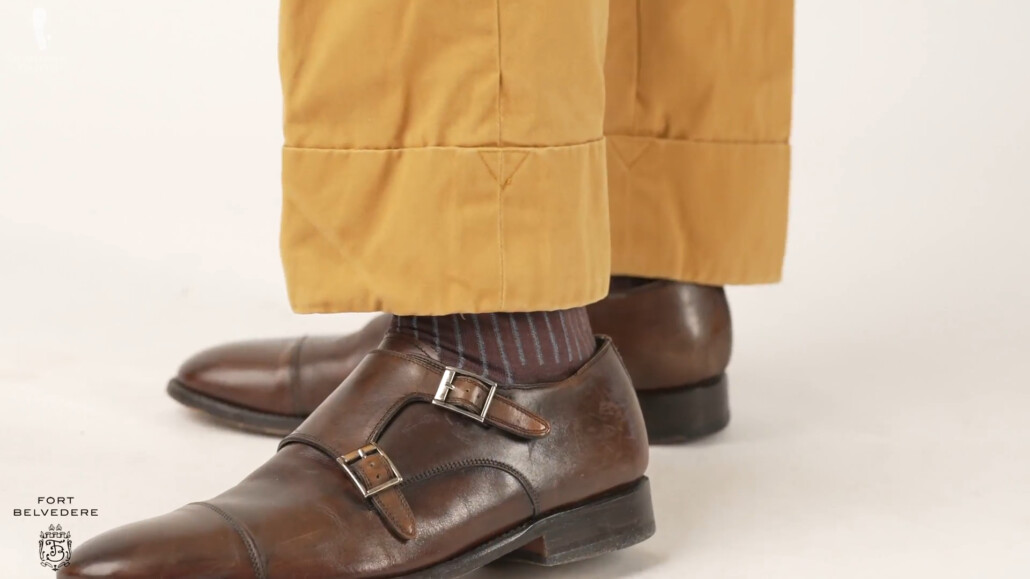
Similar negative associations turn men off of trouser components such as suspenders and cuffs on pants, even though all of these features were commonplace in the Golden Age of Menswear and all help to make their wearers more comfortable, more stylish, or both in various ways.
That’s why we made a guide extolling the benefits of each and every one of these features. So, take a page from the classic style guidebook and see if these classic elements will improve the look of your pants.
5. You’re Settling for Boring Pants.
Many men feel fairly comfortable experimenting with bolder options when it comes to shirts and jackets. These are prominent garments that obviously add personality to a look. But to ensure an ensemble doesn’t become too “out there,” these garments are usually paired with fairly sedated pants.
Now, don’t get us wrong—this is a great way to achieve a balanced look. But don’t be afraid to flip the script with bolder trousers or opt for an ensemble that isn’t afraid to go all out in every respect.

Mixing and matching colors, patterns, fabrics, and trouser types unlocks an almost limitless range of trouser styling possibilities. Classic trousers have a far wider range than just chinos. Selecting the types of trousers that you wear based on planned activities, occasions, and formality will allow you to optimize your pants for the situation.
And this goes beyond reserving your formal evening trousers for formal evening occasions. For example, for a versatile color option in transitional seasons, you could consider earth-tone trousers, while bolder colors allow you to have more fun in the sun or brighten up a dull winter day.

Fort Belvedere
Midnight Navy Blue Stancliffe Corduroy Trousers

Fort Belvedere
Camel Stancliffe Corduroy Trousers
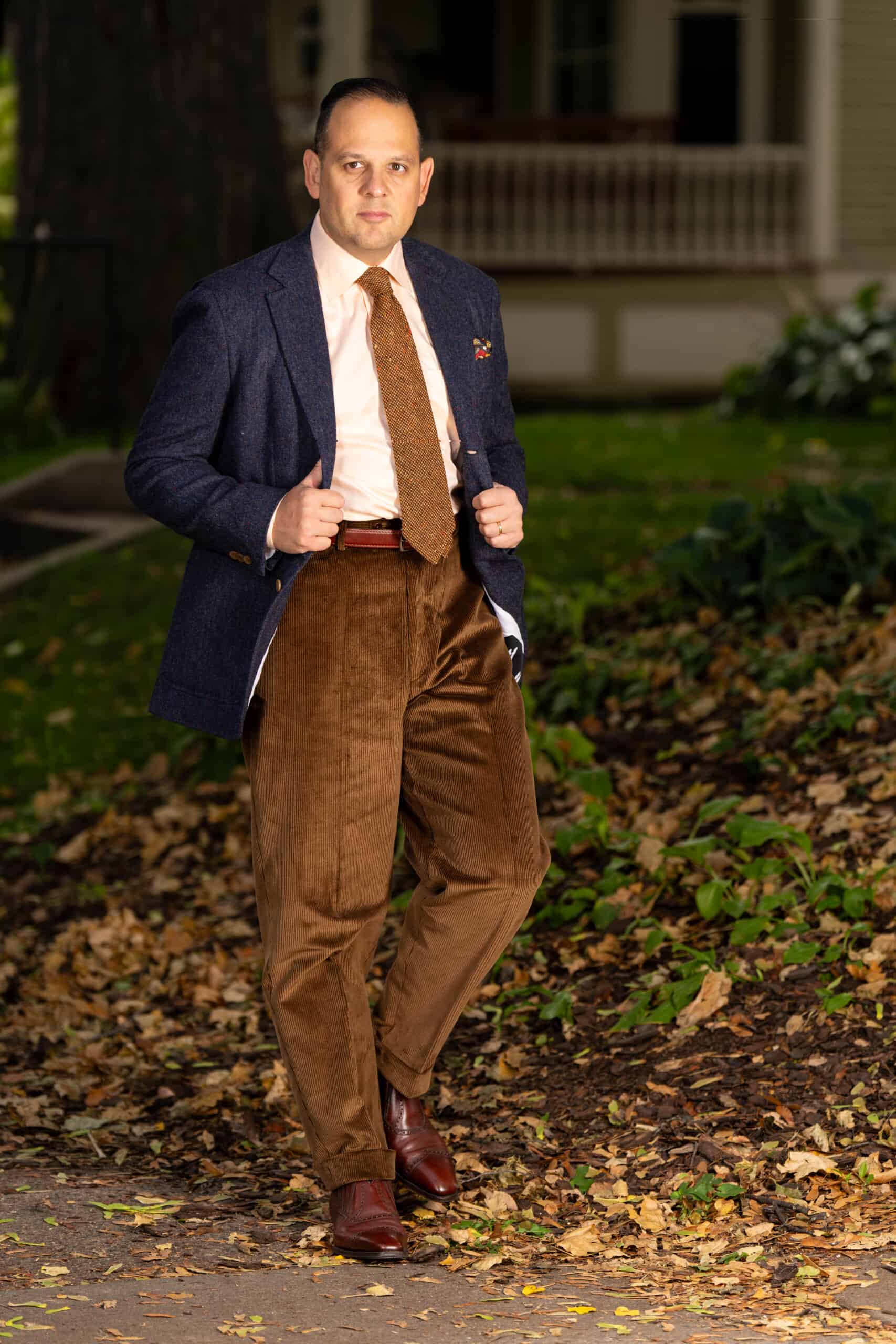
Fort Belvedere
Cognac Stancliffe Corduroy Trousers
Vertical stripes could help you appear taller, while plaids and windowpanes add masculine bulk. Adapting fabric type and cut will allow you to beat the heat in style, like with a fun pair of shorts or linen trousers if you prefer something more elevated, or keep warm in blustery conditions with thick wool.
Even just adjusting the texture of your trousers—like choosing flannel over worsted wool—can drastically alter their appearance and functionality. Corduroy is one of our favorite materials for trousers because it combines unique visual interests with exceptional material characteristics.
Contrary to some opinions expressed in our comment section, there is a time and place for denim jeans in classic style. Mix and match fabrics and styles to find the pants that suit you and your needs.
8 Essential Trousers for Your Closet
6. You’re Not Investing in Your Pants.
Due to a variety of factors, trousers tend to cost noticeably less than jackets. A retailer selling a jacket at $1,000 often offers comparable trousers at $300. But that doesn’t mean that you should skimp on what you pay for your trousers.
Just like your jacket, shirt, and shoes, quality trousers will require an investment—whether that investment be in the form of a higher cost paid out to a reputable maker or time spent seeking out that perfect pair of secondhand trousers.

Vintage and secondhand are almost always the best way to score exceptional high quality relative to price. So, we’re not saying that you have to blow a small fortune on trousers in order to look good, but you should put just as much time and effort into sourcing quality trousers and invest in them the same way that you invest in other garments.
As an example, many cheaper trousers are sized linearly, meaning that all of the proportions of the base model are scaled up or down with the size of the waist. This can lead to some pretty odd proportions. When Raphael was designing our line of Stancliff trousers, he used common sense when deciding on sizing measurements.
So, on smaller waist sizes, there’s a taper to the legs to avoid billowy fabric, and on larger sizes, more room was added in the seat for more comfort and range of movement. These considerations are often ignored on cheaper pants because they eat into the bottom line.

An Investment?
Invest in pants that offer comfort, versatility, polished style, and that are designed to be worn time and time again with a timeless look.
One of the great things about pants is that, when purchased with an emphasis on longevity, versatility, and quality, they can become the foundation for countless outfits. One pair of trousers can pair effortlessly with multiple types of sports coats, knitwear, and casual shirts. This provides countless combinations that have the potential for excellent cost per wear.
So, whether you’re paying for higher quality or investing time to find vintage quality, superlative pants often require an investment. Not providing that investment might mean that you’re falling victim to our last point.
“Buy It For Life:” Gentleman’s Edition
7. You’re Treating Your Trousers As An Afterthought.
A constant theme in today’s discussion is that trousers matter and have a considerable impact on your entire outfit. After all, for most people, pants visually constitute the majority of their look. Failing to take the time to really plan, coordinate, and invest in half of your outfit will naturally produce subpar results.
So, oftentimes, the key to finding trousers that suit you is to put the same effort into selecting trousers that you also do for any other sartorial choice for your upper body. This means finding pants that fit your body type, are timeless and versatile, take advantage of unique style features, feature quality materials, and represent good value.
Pants may technically be bottoms, but we hope we’ve convinced you to put them at the top of your list.

Outfit Rundown
In my outfit today, I am wearing a houndstooth blue and black sports coat. I decided to pair this with a chambray blue shirt—I feel like it goes hand in hand with the blue in the jacket. As for trousers, I decided to wear my charcoal flannel trousers. It is colder, so the flannel looks good and adds texture to my outfit.
I do have cuffs on these pants, which I actually do love, and I have side tabs on them as well. These are actually higher-waisted, and just due to my height, I cut them a little bit shorter.

I’m wearing a pocket square from Fort Belvedere. It is a floral pattern with some blue, some navy, and some green, so I feel like this kind of offsets the jacket and gives it a little bit of a pop.
For my shoes, I am wearing a pair of oxblood penny loafers. These are from Beckett Simonon. For my watch, I am wearing a Timex automatic watch. It has a blue dial to it, and it also has a blue band. I feel like this goes really well with my jacket and just the other parts of my ensemble.
And for my fragrance, I’m wearing Oxford from our Roberto Ugolini collection. For the pocket square and other menswear accessories, check out our Fort Belvedere website.
Have you fallen victim to any of the pitfalls that we highlighted today? Or do you have your own secrets to sourcing superlative pants? Let us know in the comments!
Frequently Asked Questions
Why can’t I seem to find pants that fit me properly?
Finding the right fit can be challenging due to the variety of body shapes and sizes that don’t always match standard sizing. Manufacturers often design pants based on a universal fit model which might not align with your specific body dimensions: these trousers use standardized measurements for the waist and, often, inseam but do not account for variations in the fit or size in the body of the trousers, such as the legs, seat, or trouser front.
Does the brand matter when it comes to fitting?
Yes, different brands may target different body types or follow unique sizing charts. It’s important to try various brands to determine which one caters to your build and style preferences. Each brand has its own form for its trousers, and some brand’s forms simply won’t fit you, while others may be an excellent fit.
How do material and cut affect the fit of pants?
The fabric’s weight, stretch, and drape can significantly influence how pants fit and feel. Additionally, the cut, usually defined with terms like straight, slim, relaxed, and the like, determines the shape and space provided by the garment, impacting overall comfort and suitability for your body type. A pair of tight skinny jeans will hang from your frame very differently from a pair of wide-legged dress pants.
Are there differences in fit between casual and formal pants?
Yes, there are. In general, casual pants are often designed for comfort and may offer more room, as a greater emphasis is placed on freedom of movement due to the range of activities you are likely to be doing in casual trousers. Because they are intended to be worn under more sedate and dignified conditions, formal trousers are typically structured to create a more elegant and generally sleek silhouette, which often results in a tighter fit.
Should I consider custom-tailored pants?
With a little effort, men with most body types should be able to locate ready-to-wear trousers that suit and flatter their figures in most respects. If, however, you are having difficulty properly fitting your body type or desire a very particular fit and off-the-rack options consistently fail to meet your needs, custom tailoring can be an excellent solution. Tailors can adjust various aspects of the pants to fit your exact measurements and preferences.
What role does body proportion play in finding the right pants?
Trousers are the foundation of your ensemble and define, in many ways, the overall proportions and lines of your entire look. You should always be mindful of your personal proportions, and what you wish to emphasize or deemphasize, when selecting trousers. For instance, someone with long legs and a short torso may need different styling compared to someone with a longer torso and shorter legs. Ensure that you are cultivating the correct proportional lines by experimenting with the rise, length, and waist positioning of your pants.
Can alterations help if I can’t find a perfect fit?
Alterations can drastically improve the look and fit of a pair of trousers. These alterations can include fairly minor tweaks, such as hemming the length or taking in the waist, to more substantial alterations; be aware, however, that your alterations tailor is limited in what he can practically achieve with any one pair of pants.
What should I prioritize for the best fit – waist size, length, or leg style?
It’s essential to start with the correct waist size for comfort and security. Length can often be altered, so next, focus on the desired leg style and how it complements your body shape.
Are there any tips for shopping for pants online?
When shopping online, carefully review the size guide, look for customer reviews regarding fit, and pay attention to the return policy in case the pants don’t fit as expected. Knowing your measurements will make it much easier to utilize and interpret brand size guides.
What makes pants “high-waisted?”
Trousers with a high waist are designed so that the top of the waistband sits around your natural waist, which is typically the narrowest part of your body, near your belly button. Most modern pants are mid-rise, meaning that they sit around your hips, or below your hips if they are low rise. Lower waists are favored nowadays because they are cheaper to make and easier to wear with a belt.
What does “break”mean?
Break refers to how the hems of your trouser legs fall, or break, over the top of your shoes. While less break is traditionally more formal, ultimately, you can usually select whichever break you prefer. The full break, half break, quarter break, and no break are the most common types.



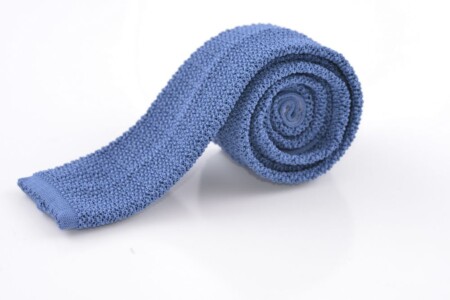
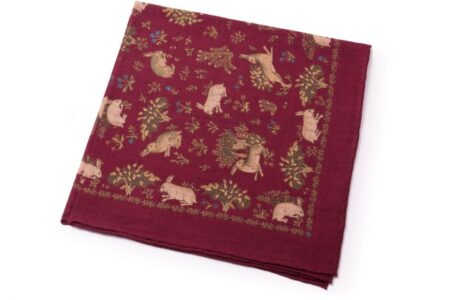
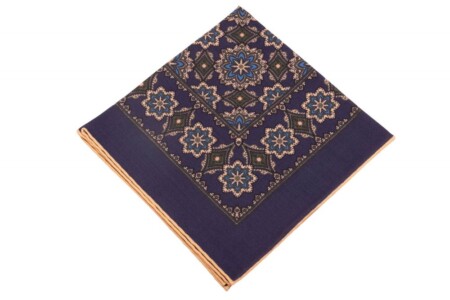
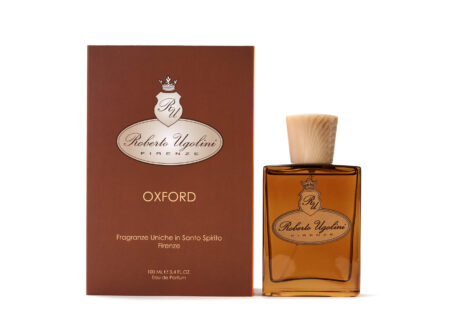
Do you have any suggestions for shorter men who wear a short rise pant? I am a 40 short. Brooks Brothers Madison cut suits with 34 short rise pants fit. But Brooks Bros. stopped offering short rise casual pants and odd pants years ago. Jos Bank stopped several years later. After 15 years cords wear out. Even Berle now offers only short rise khakis. No cords or other odd pants.
Any suggestions?
Please do not say things like ‘more slimmer’ … ‘more trimmer’ (look). These are egregious solecisms. Either simply ‘slimmer’ or ‘trimmer’, please, or ‘more slim’, ‘more trim’, etc. If you have no idea what I’m talking about, suggest you Google ‘correct use of comparatives’
Kind regards,
Excellent advice! There are just a couple of instances where the visuals don’t support the text as well as they might:
1. Two of the still images accompanying the transcript show the model standing pigeon-toed (Raphael in Section 2 and Ivan in Section 5). This unattractive pose undermines the intended message that the outfits in question are “Dos” rather than “Don’ts”, as readers (especially novices) may react negatively to the overall look as something they wouldn’t want to emulate, rather than judge the outfits on their own merits. The same issue often crops up in GG articles—hopefully, easily avoided.
2. I suspect that for the still photos Ivan may have hitched up his trousers, as the hemline in these pictures contradicts his own wise counsel to avoid exposing too much ankle. This seems less problematic in the video. However, I imagine not all readers watch these videos, preferring to read the transcripts, so it would be good to avoid conflicting messaging between text and still photos.
Overall, though, this is another fine GG article. Special kudos to Ivan for his beautiful blue Timex Marlin, which certainly does harmonise perfectly with his outfit!